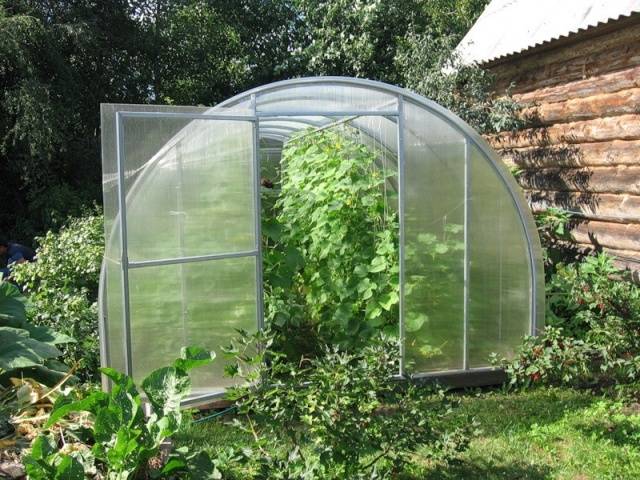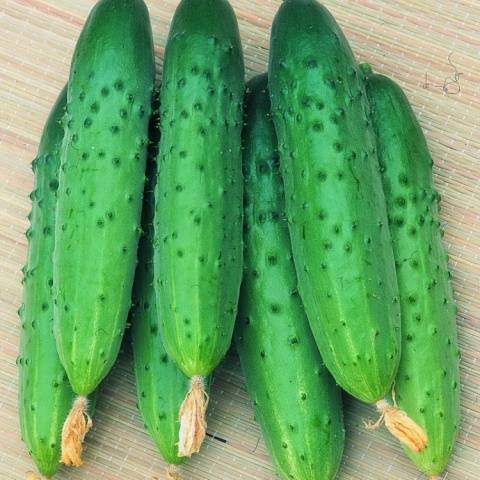Content
No matter what extra-early varieties are planted in the ground, they still will not be able to get ahead of greenhouse cucumbers. It is in greenhouses that the earliest vegetables grow, and the very first of them are cucumbers. You can learn about the main stages and rules for planting cucumber seeds in a greenhouse from this article.
Growing plants indoors has its own characteristics; in order to get a good harvest, you need to do a lot of work.
Types of greenhouses
First of all, you need to build the greenhouse itself. Its dimensions and design depend on the scale of cultivation: a film greenhouse will be enough for your own needs for vegetables, and those who sell early vegetables cannot do without a capital heated greenhouse.
So, the most common types of greenhouses:
- large greenhouses made of polycarbonate;
- film greenhouses;
- covering temporary films, which are needed only before the emergence of shoots, are then removed.
Selecting a variety by pollination type
Varieties of cucumbers are divided into many subspecies and types.To choose the best and most suitable variety, you need to understand these subspecies.
So, the first thing to determine is whether the plant will have the opportunity to pollinate. If the greenhouse has a sliding roof, ventilation is possible, and bees live close to the site, gardeners advise choosing one of bee-pollinated cucumbers. Numerous reviews indicate that these are the most delicious cucumbers.
For those who really want to eat bee-pollinated cucumbers, but there is no way to attract insects, there remains a manual method of pollination - they do it with a small brush or by bringing a male flower to a female one.
Parthenocarpic varieties are more convenient in this regard - they do not need pollination at all, since all the flowers on the plant are female. The disadvantage of such cucumbers is the lack of seeds inside the vegetable, but it is the seeds that give the cucumber its unique taste and aroma.
Compromise is a self-pollinating variety containing both male and female inflorescences that pollinate without outside help. Such cucumbers retain seeds that are rich in vitamins and do not require additional care associated with the transfer of pollen.
What is a cucumber for?
Before purchasing seeds, a gardener must know the answer to the question of what he plans to do with the greenhouse crop:
- sell;
- eat fresh;
- salt and marinate for the winter.
In the first case, productive varieties are needed, because the number of cucumbers harvested from one bush is very important here. To the most productive varieties of greenhouse cucumbers are mainly hybrids. Such as:
- "Cupid F1";
- "Hector F1";
- "Ant";
- "Bidretta F1".
Used for fresh consumption salad varieties. These cucumbers are distinguished by their soft skin and juicy pulp; inside the cut salad vegetable there are many large seeds.
It is also easy to distinguish a salad cucumber by its appearance: most often they have a smooth skin with small pimples (or no pimples at all), a long, tapering shape and a dark green tint.
The best salad species suitable for growing indoors are:
- "Zozulya F1";
- "Tamerlan F1".
In addition to excellent taste, these hybrids are distinguished by high yields and large fruits.
For preservation you need small cucumbers and a regular cylindrical shape, because the fruits need to be placed in tight jars with brine. Peel pickling cucumbers thick, with tubercles and spines, and the flesh is denser than that of a salad vegetable. The main property of such cucumbers is their ability to maintain crispness after heat treatment.
Numerous reviews from housewives suggest that for preservation it is better to choose:
- "Grasshopper F1";
- "Competitor";
- "Annushka";
- "Bouquet F1".
In addition to those listed, there are universal varieties. These cucumbers combine the best qualities of pickling and salad varieties, are distinguished by high yields and resistance to diseases (for example: “Corporate”, “Severyanin”, “Blagodatny”).
Attention! An equally important point is what ripening time the variety has. After all, to get the very first cucumbers you need one of the very early types, and for preserving for the winter, middle and late cucumbers are more suitable.
What characteristics should a greenhouse variety have?
To summarize the above, we can say that not all varieties are suitable for growing indoors. The greenhouse atmosphere has its own characteristics that not every plant can withstand..
Greenhouse cucumbers should:
- It is good to tolerate shade and lack of direct sunlight.
- Be resistant to high humidity.
- Do not rot in conditions of poor ventilation.
- Have non-spreading bushes and vines without many side shoots (bush).
- Be high yielding.
- Resistant to most diseases (in greenhouse soil the plant has a very high risk of infection).
- Possibility of pollination.
Winter-spring varieties
Which cucumbers appear first? Of course, those that gardeners took the trouble to plant before the rest. This category includes winter-spring varieties; the seeds of these cucumbers are sown in greenhouses in winter. The first harvest appears in late February-early March.
The main requirement for early cucumbers is that they must be able to withstand low light, because the winter sun is not enough for normal plant growth.
"Blagovest F1"
This hybrid belongs to plants with unlimited stem growth, and therefore provides very high yields. “Blagovest F1” is a parthenocarpic variety, so it can be planted in a closed heated greenhouse; it does not need bees.
The fruits of this hybrid are small - up to 85 grams, covered with sparse tubercles. The cucumber has a well-defined taste and aroma, medium-thick peel and dense pulp.All this allows it to be used with equal success for salads and canning.
Growing a hybrid does not require complex care - the seeds are treated against the most common diseases.
"F1 Relay"
This is the option when it is better to wait for the first spring warmth. If you want to get the fruits of this variety early (plant the seeds in winter), you will have to do manual pollination.
Cucumbers grow large, their weight reaches 200 grams. The peel is thin and smooth with a small number of pimples. The “Relay F1” variety is a bright representative of salad varieties, completely unsuitable for preservation.
Cucumber buds should open just in time for the bees to appear, because the variety is bee-pollinated.
Spring-summer varieties
In warm spring, you can also plant cucumbers in a greenhouse. Not all regions are provided with a temperature high enough for this heat-loving vegetable. Besides, the yield in a greenhouse is still higher than in open ground. Disease-resistant varieties are planted in late spring; it is during this period that cucumbers are most susceptible to infection. Another important indicator is resistance to low temperatures (for ventilated and unheated greenhouses).
"Tumi"
The variety is one of the most resistant. He is not afraid of either illness or fluctuations in air temperature.
The greens of this variety are small and have thin, delicate skin. Vegetables are best suited for fresh consumption.
The main advantage of the Tumi cucumber is its productivity - from one square meter of greenhouse soil you can get about 12 kg of the vegetable.
"Courage"
"Courage" refers to varieties suitable for sale. Buyers also love beautiful, smooth cucumbers for their excellent taste.
The plant is endowed with resistance to most greenhouse diseases. It is distinguished by a large number of flowers that do not turn into barren flowers. With proper care, you can grow a cucumber from each flower - the yield of the variety reaches 25 kg.
Summer-autumn varieties
Late varieties are distinguished by long-term fruiting. They are used for planting in greenhouses by those who sell cucumbers for canning or provide New Year's tables with fresh vegetables.
"Maryina Roshcha F1"
The hybrid is parthenocarpic and does not require pollination. Excellent for planting in a greenhouse and does not require complex care.
Cucumbers with thick skin and large pimples are perfect for canning and marinade.
"Anyuta F1"
This hybrid belongs to the gherkins - the greens grow small (5-7 cm). The variety does not need bees either; it belongs to the group of self-pollinating ones.
The hybrid should be planted in well-lit areas - the plant requires light. Cucumbers with tubercles and spines, usually used for canning.
Which cucumber is best
It is impossible to say for sure which varieties are more suitable for greenhouses. All modern hybrids and varieties of cucumbers have their strengths: some have high yields, others have excellent adaptation to any conditions, and others have taste.
Probably every experienced gardener has his own favorite greenhouse variety. Just don’t forget that seeds need to be purchased from a trusted manufacturer.




















